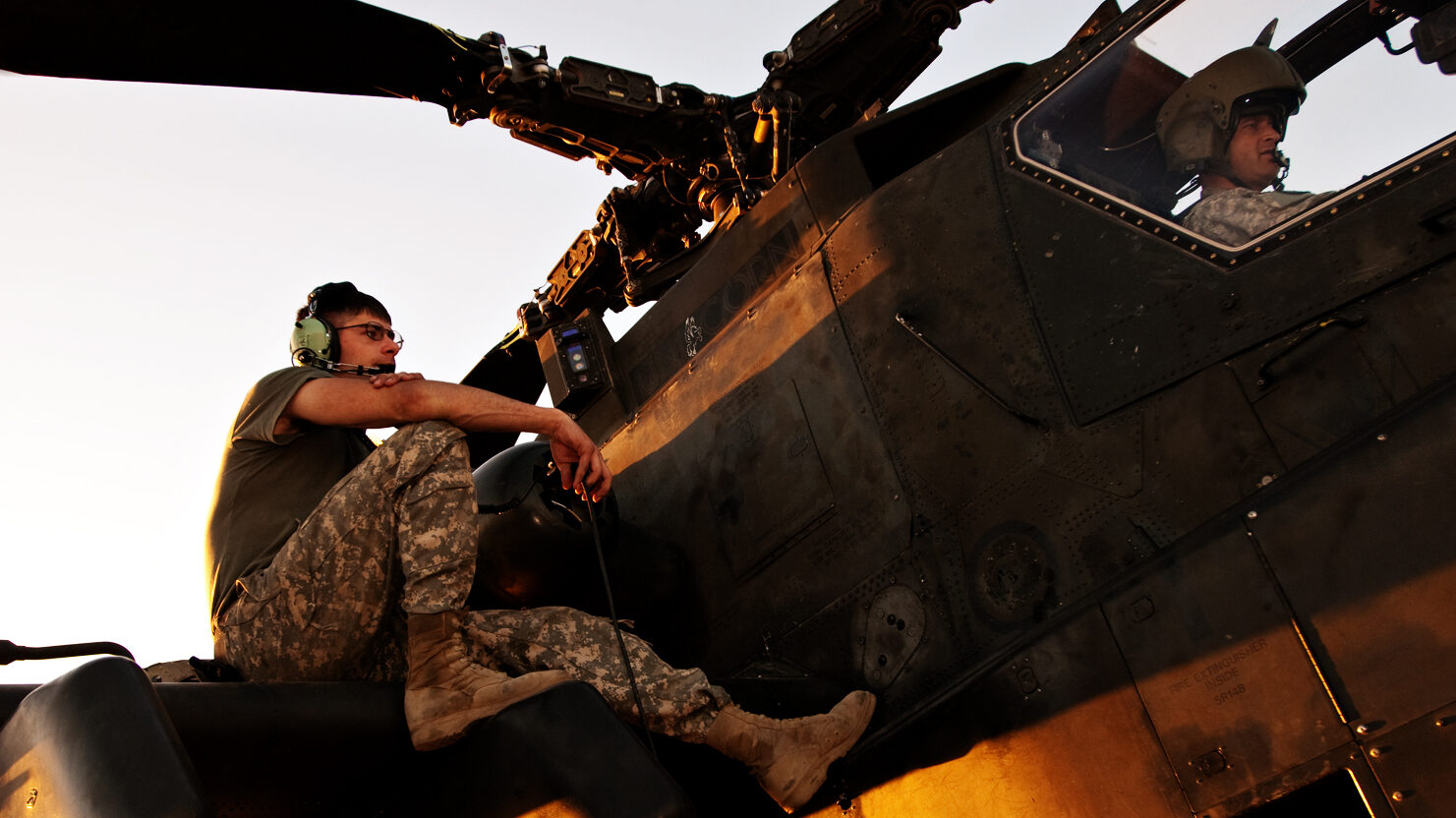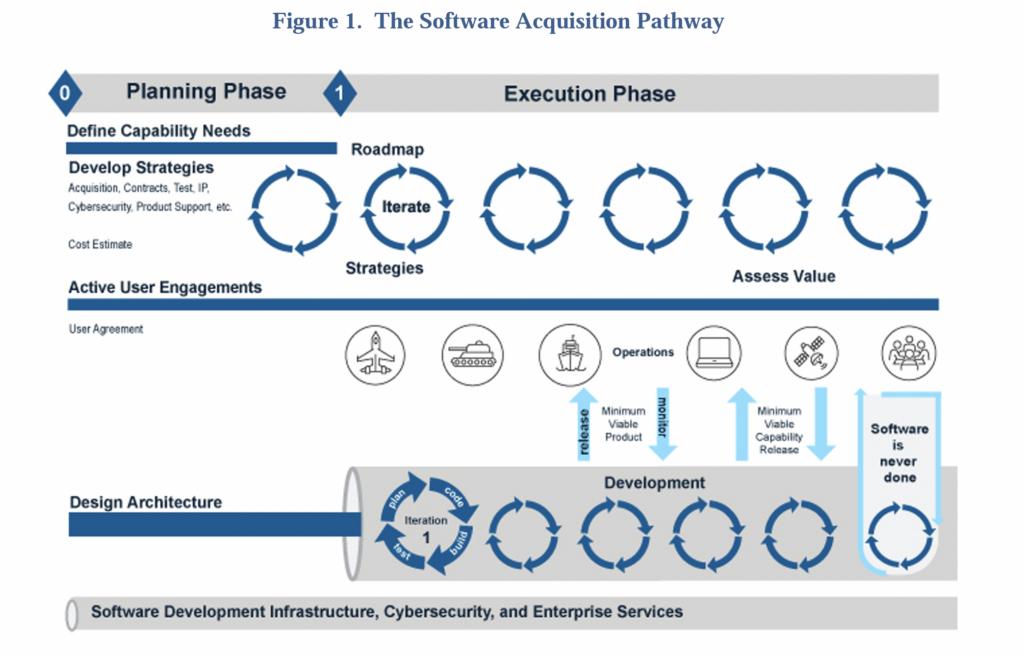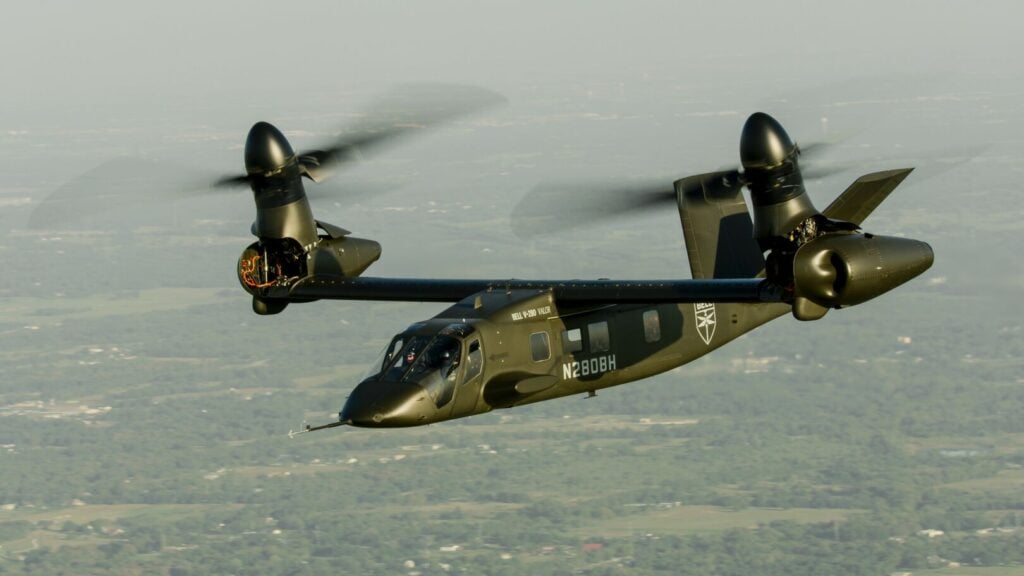
An Army maintainer working on an AH-64 Apache in Iraq (Army photo by Spc. Roland Hale)
WASHINGTON — Life or death in combat increasingly comes down to software and electronics. But there is widespread concern that traditional Pentagon processes that only update equipment every few years can’t keep pace with modern threats.
That’s why the Army is leaning heavily on streamlined acquisition processes like the controversial Middle-Tier Acquisition process and the Software Pathway, especially for its current helicopters and Future Vertical Lift aircraft, according to the service’s procurement chief, Assistant Secretary for Acquisition, Technology, & Logistics Douglas Bush.
“The traditional way of doing software upgrades for aircraft or other things [was] every few years, roll out a big upgrade,” Bush said Thursday morning at an Association of the US Army “Hot Topic” mini-conference on aviation. “The new approach is trying to do a minimum one [upgrade] a year.”
“That will be absolutely critical,” Bush said. “In particular in aviation, one thing that comes to mind is aviation survivability.” While Bush didn’t give specifics, “survivability”typically includes defensive countermeasures like flares and chaff to decoy away incoming anti-aircraft missiles, or jammers and lasers to blind their guidance systems.
RELATED: Pentagon not prepared for software updates at the speed of war, report finds
Those defenses are under ever increasing pressure. As has been widely reported, the war in Ukraine is particularly dynamic and deadly in the air. Traditional fixed-wing aircraft and helicopters are frequently shot down, hamstringing Russia’s ability to use its large air force, while expendable, cheap quadcopters and other mini-drones swarm at low altitude as both scouts and precision strikers. In such a viciously competitive environment, countermeasures require rapid upgrades to keep pace.
“Equipment has to spin on threats,” Bush said, not on ponderous traditional cycles. “That Software Pathway will enable us to make that work because … all of these platforms really across the Army, our large platforms, are increasing really software programs.”

The Software Pathway (SWP) acquisition process involves repeated, rapid cycles of updates. (Defense Department graphic from DOD Instruction 5000.87)
An ever-larger share of what needs to be updated is software, with intangible changes to code driving dramatic improvements in everything from anti-missile jamming to aircraft flight controls. In 2020, then-Pentagon acquisition chief Ellen Lord rolled out — among other reforms — a new, streamlined acquisition process specifically for code, the Software Pathway.
“We started with small programs, but now… we are making a major push to start using it more, because it frankly represents how modern software is done,” Bush said, pointing to the rapid upgrade cycles of commercial software that SWP is meant to emulate. “It’s an area of growth for us. I think we’re learning a lot… and we’re gonna learn how to do it.”
“I will say that acquisition pathway is a little different,” he caveated. “You cost estimate a bit different, and that may make people nervous, [but] there are always cost-estimation people who are nervous — that’s their job.”
Another streamlined pathway that makes some well-placed people nervous is Middle-Tier Acquisition, aka MTA, which was created in 2018 and which the Army has enthusiastically embraced. The service’s highly-automated armored troop carrier, the Optionally Manned Fighting Vehicle, is using MTA (and has a huge software component), as is its battlefield air & missile defense system, IFPC.

Bell’s V-280 Valor tiltrotor won the US Army’s Future Long-Range Assault Aircraft (FLRAA) competition. (Bell)
So are all four of its big-ticket aviation programs: the Future Attack Reconnaissance Aircraft, the Future Long-Range Assault Aircraft, the Future Tactical Unmanned Aerial System, and the helicopter-launched mini-drones known as Air-Launched Effects. “All of them are using, in some way, Middle Tier,” Bush said. “Aviation is one of the areas we’re using this new authority the most.”
But as these programs progress from research, development, and prototyping to mass production, their costs and logistical complexity increase beyond what many would consider “middle tier.” “At a certain point the program gets big, the money gets really big,” Bush acknowledged. “It could get bumpy in places.”
RELATED: Oversight or overkill? DoD faces new congressional order to detail Mid-Tier Acquisitions
Congress has pushed for closer oversight of MTA, and Bush, a longtime Hill staffer himself, said he sympathizes with their concerns.
“Being able to do programs faster and having flexible requirements does not obviate the Army’s responsibility to work with Congress and inform them of what we’re doing, to be transparent, and also just take care of the taxpayer dollars. So all those responsibilities are still there,” he said. “We’re just getting at it a bit differently than the… very slow [and] very painful, traditional acquisition pathway.”
Air Force picks Anduril, General Atomics for next round of CCA work
The two vendors emerged successful from an original pool of five and are expected to carry their drone designs through a prototyping phase that will build and test aircraft.


























